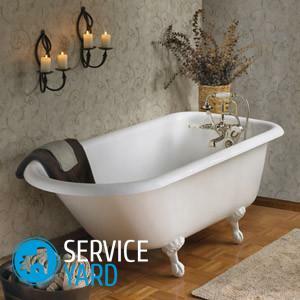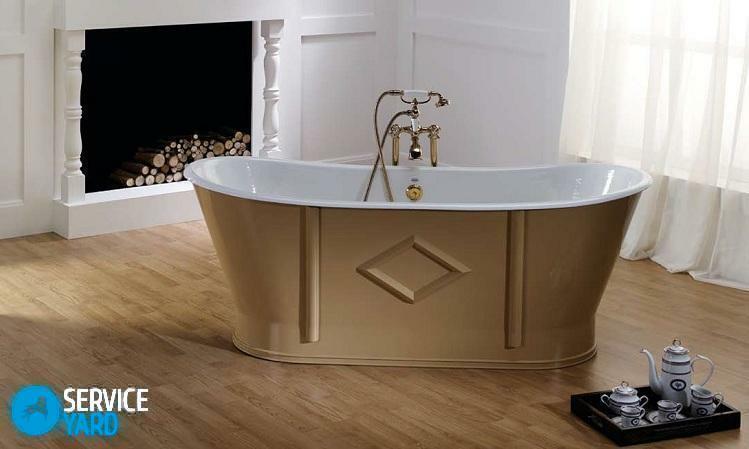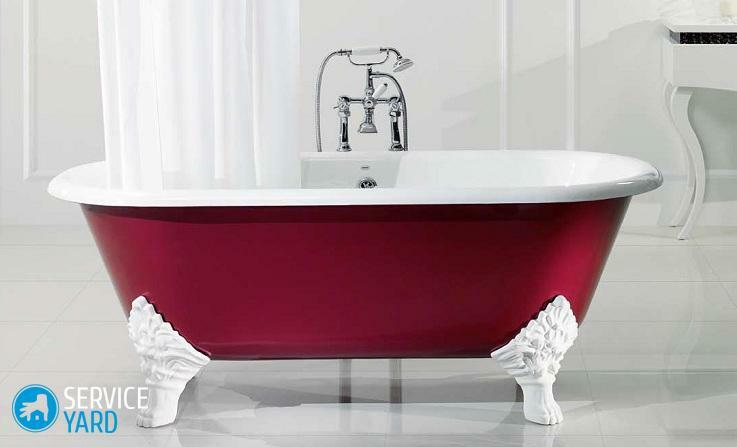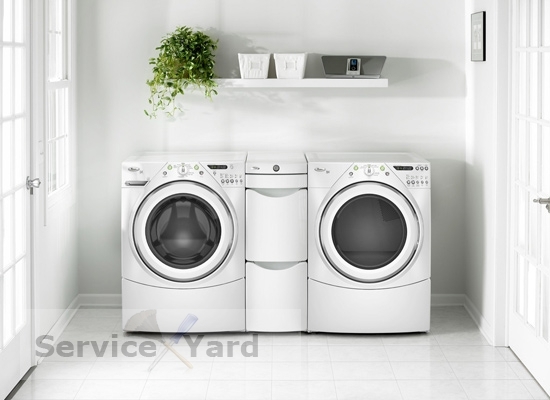
- Enamelling cast-iron bath
- Liquid acrylic: enamel as from the factory
- Acrylic liner: a brand-new bath
Many of the houses have a cast-iron bath - it could have stayed since the USSR, or you wanted and installed it. All the charm of such plumbing is that such fonts are incredibly reliable, practical, but like everything in the world, they can acquire defects over time. The most common is the cleavage of the enamel. Accordingly - it is necessary to know how to repair a cast iron bath, and make it right that a good font served a couple of decades. This will be the topic of this article.
to the table of contents ↑Enamelling of the cast-iron bath
The guarantee for the bath, which is made of cast iron, is slightly higher than the shelf life of its enamel. All of us often use a variety of abrasive powders and other chemicals that have a negative effect on the enamel coating of the bowl. Therefore, the most famous method of restoration is enamelling, which is the most accessible and simple. It is with the help of it that you can easily and quickly hide the appearing roughness and yellow spots.
Pros of this method of restoration:
- sufficiently low cost of necessary substances and materials;
- does not need to dismantle the bath;
- you can change the color of the bath, adding the dye to the enamel;
- there is no need for subsequent repair processes;
- method is suitable for both cast iron and steel bath.
Cons:
- the new enamel will last no more than 5 years;
- composition, which is applied to the surface of the bath, dries very long - at least 7 days;
- the new coating is quite tough, accordingly - more sensitive to shocks, which by itself leads to the formation of chips;
- substance must be applied in a thin layer, so this enamel will not be able to hide irregularities, serious chipping and dents;
- , after passing a small amount of time, the enamel begins to turn yellow.
When the properties of the enamel coating are completely satisfactory to you, it will not be difficult to apply it to the surface. Consider how to repair a cast iron bath in this way.
Prepare all the necessary tools:
- sandpaper;
- drill with appropriate type of nozzle type grinding wheel;
- powder abrasive;
- degreaser;
- lint-free natural napkin;
- two-component enamel;
- brush.
Important! All work must be carried out in a respirator, as well as rubber gloves.

Applying enamel with your own hands:
- Sprinkle the bath with the abrasive powder you have chosen, remove the old enamel with sandpaper or with a drill.
- Remove the torn enamel and crumb by opening the tap.
- Treat the surface of the bath with a degreaser, and then wipe dry with a lint-free cloth.
- Fill the bath with hot water and soak for at least 10-15 minutes. As soon as the time runs out, drain the water and wipe the bowl again with a dry natural napkin.
- Be sure to check that the bathroom is not a variety of threads, villi.
- Prepare the enamel according to the instructions: mix the hardener and enamel in the appropriate proportions, which are indicated on the package.
- Use a brush to apply the first layer of enamel to the bath surface.
- Leave to dry for the time specified in the instructions. Often, no more than 25-30 minutes.
- In exactly the same way, apply the second and then the third layer of enamel, while not forgetting to leave the time for drying.
Important! Specialists note that it is possible to apply a fourth layer, which will be an adapter, but it is optional. Use an updated bath can be no earlier than a week later.
to content ↑Liquid acrylic: enamel as from the factory
The method of repairing cast-iron baths with liquid acrylic has appeared quite recently, but has already gained a certain trust among professionals.
Important! The new substance, which is called "Stakril", allows you to obtain an excellent surface that hides all the disadvantages of cast-iron baths. The thickness of the layer varies in the range from 3 mm to 6 mm.
Pros:
- the viscosity of the agent provides a reliable layer of new enamel;
- free flow provides a perfectly level layer;
- high impact resistance and strength;
- high service life, which reaches two decades;
- is an affordable price.
Cons:
- is a fairly time consuming process;
- cost is higher than ordinary enamelling.
Important! Before you get started, remember that you can change the color of the bath by adding a certain amount of color to the acrylic.
Tools that you will need exactly the same as for enamelling.

The work is carried out as follows:
- Carry out a thorough preparation of the cast iron bowl, which is described in the enamelling - from 1 to 5 steps.
- Disconnect the siphon, to drain, place any container into which all excess acrylic will drain.
- Prepare liquid acrylic by following the instructions: Mix the product with the hardener in the proportions specified by the manufacturer.
- Begin to pour acrylic from absolutely any convenient container on the side of the bath.
Important! Acrylic on the bath should be poured continuously, so take a convenient and not very small capacity.
- When the spray reaches approximately the middle, move the acrylic mixture around the perimeter of the bowl.
- When you return to the starting point, repeat the procedure from the middle of the surface, and again around the entire perimeter. Treating the bottom is necessary at the very least.
- During operation, do not save the liquid, all the excess will go into the container that you put under the drain, but the surface will eventually be perfect, smooth and even, hide all the defects.
Important! The time for which acrylic freezes depends directly on the manufacturer. It usually takes 1-4 days. When choosing a liquid substance, pay attention to the one that has the longest drying time - this will ensure a higher quality of the new enamel.
to the contents ↑Acrylic liner: brand new bath
This method is one of the most expensive, but it gives you the opportunity to get a completely new bath without buying another product. To repair the bath is cheaper, you can independently install it.
Important! The insert can serve you up to 16 years.
Pros:
- the restoration process takes place fairly quickly, without other costs;
- high working life of the new bath;
- surface is smooth, smooth and attractive in appearance;
- the new bowl is extremely resistant to wear.
Cons:
- incredibly high cost of manufacturing a new acrylic bowl;
- installation of the liner must be carried out before the beginning of the walls, otherwise - you have to knock down the old tile around the bath, and then mount a new one.
Important! In the case when the bathroom is still in the process of repair - this option is for you.
To get started, you will need tools:
- silicone sealant;
- mounting two-component foam;
- liner.
Workflow:
- The insert you order in a firm that will be able to make an exact copy of your old bathroom.
- If the insert does not have a hole for overflow and drain, do it.
- Thoroughly peel the old bowl, and then degrease it.
- Insert insert into the bath, check the parameters, trim the sides, if necessary.
- Apply the mounting foam over the entire surface of the liner and on the entire inside surface of the cast iron bath.
- Acrylic insert insert, all joints treated with a sealant.
Important! When you install the liner, immediately fill the bath with cold water, soak it for at least 1 day. After the time you can use the bath to the destination.
Now you know several ways how to repair a cast iron bath with your own hands. We hope that one of the proposed options came up to you both in terms of the cost of work, and the quality of the restoration, and you managed to perform repairs perfectly.



